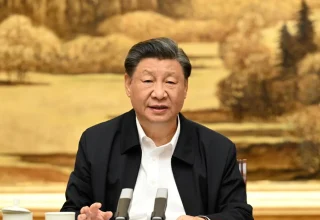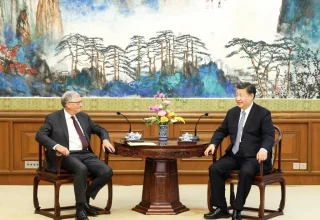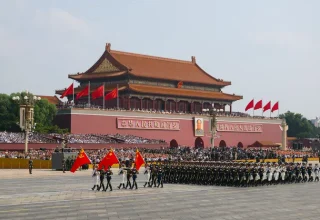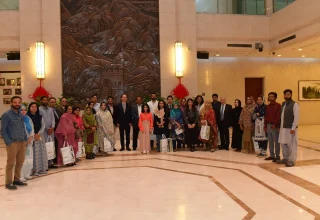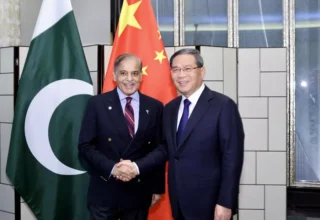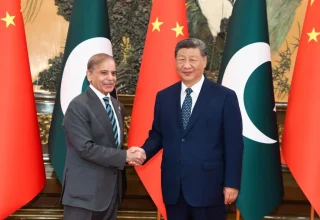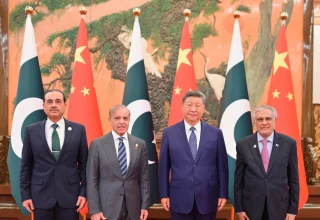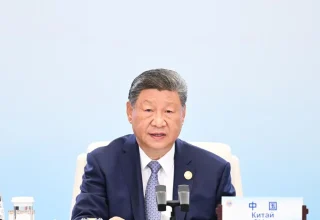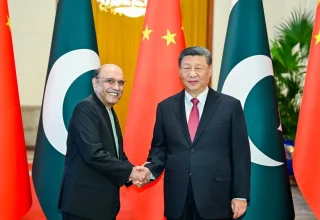
The Xinjiang Uygur Autonomous Region of China plans to reach substantial social improvements alongside economic growth during the upcoming milestone of the region’s 70th anniversary of foundation in 2025. Recent accomplishments by the region surpassed 2-trillion-yuan GDP during 2024 which translates to approximately 278 billion U.S. dollars. The upcoming years bring a target GDP growth rate of approximately 6 percent because the region wants to focus on economic development. The upcoming era presents two main strategic goals, the establishment of high-quality development along with ongoing social reforms and enhanced links to global markets.
The economic evolution of Xinjiang during 2025 adopts multiple dimensions through an aggressive growth strategy for development. The region works to achieve a 6 percent GDP rise while developing a sustainable growth model that supports premium development targets. The upcoming economic phase will combine quantitative growth enhancements with quality improvement initiatives. Xinjiang will enhance development by improving manufacturing frameworks as well as technological advancements while promoting environmental compatibility within economic decision-making. Xinjiang sets strategic focus on deep reform initiatives aimed at key economic fields including resource utilization alongside manufacturing sectors and infrastructure creation. The reforms will enhance productivity while driving innovation throughout the industries of the region to improve its market competitiveness.
Xinjiang intends to advance the “high-level opening up” strategy by strengthening its connections with the global economy. Xinjiang’s trade-facilitating logistics infrastructure together with its vital capabilities in supply chain management will fundamentally support its economic development strategy.
Ten key industries represent a central element within Xinjiang’s 2025 plan. These diverse sectors intend to develop an expanded economic foundation for Xinjiang that will establish lasting economic stability. The top industries designated for development comprise three energy clusters including petroleum production and processing along with clean coal technologies and new power architecture. Existing in large amounts through natural resources, Xinjiang focuses its industrial growth strategy on energy industries consisting primarily of crude oil extraction and refined gas production alongside clean coal operations that support China’s national energy hub requirements.
Growing renewable energy infrastructure contributes to the future economic goals of this region. Both regional and national priorities toward sustainable fossil fuel reduction and renewable energy adoption find resonance in investments toward new power systems and green mining. Xinjiang needs renewable energy development as both a pillar for its local advancement and a key contribution to China’s sustainable energy targets.
The 2025 development plan identifies cotton industry and clothing manufacturing as fundamental drivers for economic success in Xinjiang given the region’s tradition as a cotton producer and textile producer. High-quality fruits and vegetables along with improved livestock production systems will organize the main agricultural activities in this region. The agriculture sector of Xinjiang functions as an essential part that helps meet national food requirements and generate export earnings.
Tourism recently became a central force driving economic growth within Xinjiang through its combination of natural scenic attractions and improved transportation systems. Xinjiang received 300 million visitors and generated 359 billion yuan in tourism revenue during 2024 which represented a 21 percent increase over the previous year. The enhanced accessibility of roads and airports and rail systems has accompanied transportation network improvements and triggered large scale visitor growth to the region. Xinjiang’s tourism industry will expand further from 2025 onward as forecasts indicate it will attract 320 million tourists each year. Xinjiang’s ongoing expansion brings important economic advantages through new employment opportunities and increased regional earnings which also support local business development.
Tourists from around the world choose Xinjiang for its wide array of attractions between its huge desert stretches and mountain ranges and historic landmarks. The region extends investments into its tourism infrastructure to accomplish two objectives, raising revenue and promoting cultural understanding of its special heritage while facilitating cultural exchange. Through tourism endeavours, Xinjiang projects its multifaceted cultural variety to worldwide audiences while using this sector as a cornerstone element of its nationwide soft power efforts.
The BRI represents a primary fundamental element within Xinjiang’s development protocol. Xinjiang stands strategically as a vital bridge between China’s western region and Central Asian countries because of its central geographic position. The region welcomed 16,400 China-Europe freight trains in 2024 showing a 14 percent rise when compared to the previous year. The rising rail transport operations confirm Xinjiang’s status as China’s key bridge for Euro-Chinese trade connections while serving as a fundamental link between China’s economic powers and Western markets.
Xinjiang participates actively in the BRI because the region maintains both economic development and growth potential. The BRI drives worldwide trade integration yet Xinjiang plays a fundamental role under China’s perspective for establishing global economic relations and world economic connections. Xinjiang’s logistics infrastructure will develop its border facilities and railways alongside highways to serve as an essential global trade centre while boosting international commerce capacity.
Xinjiang sets forth development priorities through 2025 which direct the region toward central status in China’s economic roadmap while sustaining equilibrium between economic development and societal stability. Xinjiang maintains its growth trajectory through diversified industrial development together with expanding tourism activities and increased participation in the BRI. Xinjiang uses economic diversification and infrastructure development together with strategic global engagement to build a sustainable dynamic future economy.



